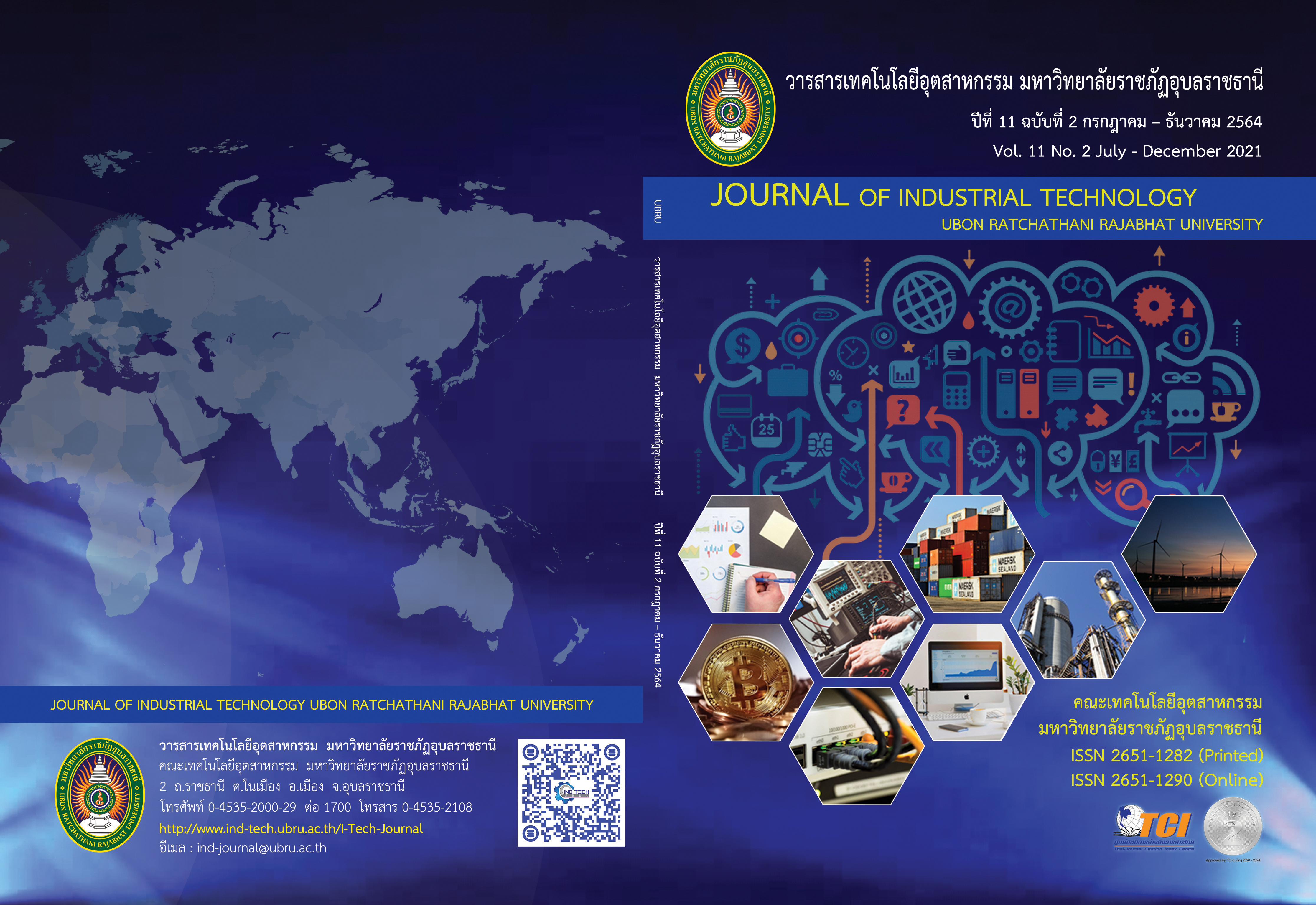การพัฒนาสื่อประสมบรรยายการทำงานของโปรแกรมภาษาซี ปฏิสัมพันธ์กับผู้อ่านด้วยเทคโนโลยีความเป็นจริงเสริมบนหนังสือเรียนการเขียนโปรแกรมคอมพิวเตอร์ สำหรับนักศึกษาชั้นปริญญาตรี
Main Article Content
บทคัดย่อ
การอ่านหนังสือเรียนการเขียนโปรแกรมคอมพิวเตอร์เพียงอย่างเดียวไม่สามารถจินตนาการเห็นขั้นตอนการประมวลผลและการปฏิสัมพันธ์ระหว่างผู้ใช้โปรแกรมกับคอมพิวเตอร์ โดยเฉพาะในส่วนพื้นที่หน่วยความจำ จึงส่งผลให้มีผลสัมฤทธิ์ทางการเรียนต่ำ งานวิจัยครั้งนี้จึงมีวัตถุประสงค์เพื่อ 1) พัฒนาสื่อประสมบรรยายการทำงานของโปรแกรมภาษาซีปฏิสัมพันธ์กับผู้อ่านด้วยเทคโนโลยีความเป็นจริงเสริมบนหนังสือเรียนการเขียนโปรแกรมคอมพิวเตอร์ สำหรับนักศึกษาชั้นปริญญาตรี 2) หาประสิทธิภาพของสื่อความเป็นจริงเสริมที่ใช้ร่วมกับหนังสือ 3) เปรียบเทียบผลสัมฤทธิ์ทางการเรียนของผู้เรียนด้วยสื่อความเป็นจริงเสริมที่ใช้ร่วมกับหนังสือ 4) หาความพึงพอใจของผู้เรียนที่มีต่อสื่อความเป็นจริงเสริมที่ใช้ร่วมกับหนังสือ กลุ่มเป้าหมายที่ใช้ในการทดลอง คือ นักศึกษาชั้นปีที่ 2 สาขาวิศวกรรมคอมพิวเตอร์ มหาวิทยาลัยเทคโนโลยีราชมงคลศรีวิชัย จำนวน 26 คน โดยวิธีการสุ่มอย่างง่าย เครื่องมือที่ใช้ในการวิจัยในครั้งนี้ประกอบด้วย สื่อประสมบรรยายการทำงานของโปรแกรมภาษาซี เทคโนโลยีความเป็นจริงเสริม สมาร์ทโฟน หนังสือเรียนการเขียนโปรแกรมคอมพิวเตอร์ แบบทดสอบวัดประสิทธิภาพของสื่อ แบบทดสอบวัดผลสัมฤทธิ์ทางการเรียนของผู้เรียนและแบบสอบถามความพึงพอใจ ผลการวิจัยพบว่าหนังสือเรียนการโปรแกรมคอมพิวเตอร์ที่ใช้เทคโนโลยีความเป็นจริงเสริมที่พัฒนาขึ้น มีประสิทธิภาพเท่ากับ 82.69/81.35 เป็นไปตามเกณฑ์ที่กำหนดคือสูงกว่า 80/80 ผลสัมฤทธิ์ทางการเรียนของผู้เรียนหลังเรียน ( =16.27, S.D. = 1.31) สูงกว่าก่อนเรียน (
= 7.12, S.D. = 1.66) อย่างมีนัยสำคัญทางสถิติที่ระดับ 0.05 และความพึงพอใจของนักศึกษาที่มีต่อหนังสือที่ใช้เทคโนโลยีความเป็นจริงเสริมที่พัฒนาขึ้นอยู่ในระดับมาก (
= 3.97, S.D. = 0.79)
Article Details

อนุญาตภายใต้เงื่อนไข Creative Commons Attribution-NonCommercial-NoDerivatives 4.0 International License.
บทความที่ได้รับการตีพิมพ์ในวารสารฯ ท้ังในรูปแบบของรูปเล่มและอิเล็กทรอนิกส์เป็นลิขสิทธิ์ของวารสารฯ
เอกสารอ้างอิง
Rattanaphianthamma W. and Prungnoi P. The educational innovation of skill development for living in the 21st century. Romphruek Jornal. 2016; 34(3): 56-78. (in Thai)
Duangphummet W. and Kaewurai W. Learning management in thailand 4.0 with active learning. Humanities and Social Sciences Journal of Graduate School, Pibulsongkram Rajabhat University. 2017; 11(2): 1-14. (in Thai)
Jarernwongsak K. The new future of thai education in thailand 4.0 [Internet]. 2016 [cited 2019 March 27] available from: www.li.mahidol.ac.th/conference2016/thailand4.pdf (in Thai)
Wipatphumprathet T. Class smartphone usage behaviors among Dhurakij Pundit University students. Suthiparithat Journal. 2016; 30(95): 48-58 (in Thai)
Sathongmai L. Virtual technology [Internet]. 2013 [cited 2019 March 27] available from: http://ladawan24nong.blogspot.com/2013/08/virtual-classroom.html (in Thai)
Sangprasert N, Inthavisas K. and Wattanakul K. Computer programming-skill enhancement for part-time undergraduate students using worksheets for hardware and software interaction via the parallel port. In Chuenkhaek W, editors. The 10th Engineering Education Conference; 2012 May 9-11; Dusit Thani Hua Hin, Phetchaburi Province: King Mongkut's University of Technology North Bangkok; 2012. P. 126-7. (in Thai)
Chaiyo Y. and Siririt W. The development of augmented reality 3D book on the topic of Chinese material media for undergraduate students of faculty of oriental medicine, Chiang Rai College. Veridian E-Journal. 2017; 10(1): 471-83. (in Thai)
Phatai K, Junpum P. and Wattanasura A. Animal planet vocabulary book with augmented reality technology. JPCSIT. 2018; 4(1): 23-8. (in Thai)


